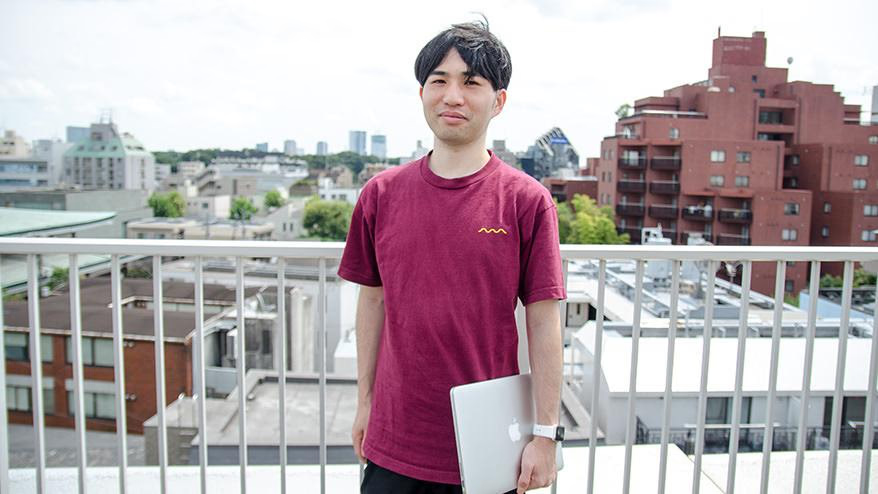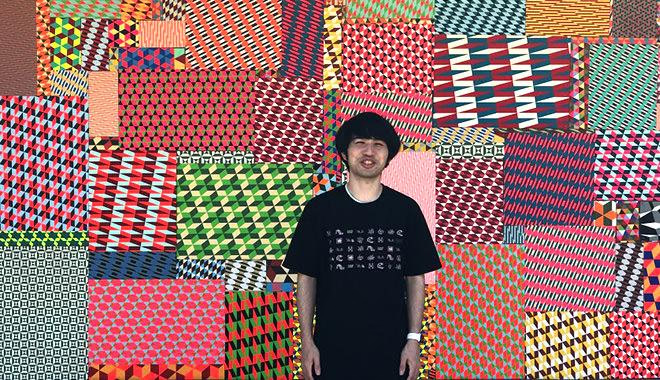The guest this time is Yosuke Hayashi, who is currently working with members of Monosus on Google Earth Outreach , a program that uses Google's map services to help many people. The interviewer is Yamauchi, a planner in Monosus's production department who previously worked in the same place as Hayashi.
Mr. Hayashi has demonstrated his talents in a wide range of fields, including subculture, contemporary art, web advertising, and community support activities. What are his roots and principles? We also asked him about his vision for the future.
(Interviewer: Aki Tanaka)
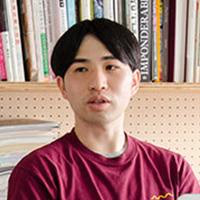
Profile of Yosuke Hayashi :
After graduating from the Institute of Advanced Media Arts and Sciences (IAMAS), he joined Mode Two Co., Ltd. After that, he worked at Dwango Co., Ltd. and Square Enix Co., Ltd., and is currently working as a freelancer. He is involved in the development of interactive content, mainly UI design and programming.
What I want to do is create something interactive.
Beyond the boundaries of designers and programmers.
It's been about two years since you started working with Yosuke Yamauchi on Monosus. What is the atmosphere like at Monosus?
Hayashi-san (hereafter, titles omitted): Everyone is super nice (laughs). It's really easy to work with them, and not only for work but also when we have personal events or company events, everyone starts by drawing up a schedule. I also think it's great that they're always so serious.
Yamauchi
It's true that there are aspects of it that are similar to an event company (laughs). I worked with Yosuke at an advertising production company where I was employed until seven years ago, and now I'm working on a Google project at Monosus... Once again, thank you for everything!
Hayashi
No no, not at all. Thank you for your help.
Yamauchi
For the Google project, Yosuke initially worked as a supporter of Innovation Tohoku , helping with various projects and creating apps.
Hayashi
That's right. Then, as I was put in charge of coding the landing page, I started to be involved on a regular basis, and before long I was in a position similar to that of a technical department member (laughs).
Yamauchi : Exactly. There is also a program that uses Google's map service to support the activities of nonprofit organizations, educators, and researchers, and Yosuke, who is good at technical aspects, is also in charge of teaching workshops there. So, Yosuke, you can design, program, and teach workshops, but what do you call yourself when you introduce yourself as a title?
Hayashi
Hmm. I change it according to the person. I answer "I'm in charge of XX" depending on what is asked of me. Basically, what I want to do is to create interactive things, whether it's a website or an app. I like seeing people's reactions when they use the designs and apps I've created, and it's rewarding.
Yamauchi
Were you originally interested in design and programming since you were a teenager?
Hayashi
No, I didn't know anything about that world while I was in my hometown of Shiga Prefecture. I liked music and wrote my own songs, but I was just lazing around in the general education department, and even when I had to decide on my career path in my third year, I didn't have any particular vision for my future (laughs). When I asked my homeroom teacher if there was anything related to music, he told me about the faculty of art and engineering. Then my art teacher told me about media art and contemporary art.
Yamauchi
Media art wasn't that common back then, so your teacher must have been very knowledgeable about art.
Hayashi
What do you think? Thinking about it now, it doesn't really seem that way. But back when the Internet wasn't as widespread as it is now, he would put pixel art from games he found online and articles about the Japanese way of looking at things on floppy disks, which was very inspiring. So I got into contemporary art, and when I applied to the art university I wanted to go to, I passed the first round, but failed the second round. But I thought that if it was that easy to pass the first round, I could easily get in if I retake the exam (laughs), so after graduating from high school, I went to an art prep school in Tokyo.
After attending an art preparatory school, he entered IAMAS.
I was inspired by the way people with different personalities exist.
Yamauchi
You moved to Tokyo from Shiga Prefecture and were exposed to a lot of Tokyo culture.
Hayashi
That's right. There were a lot of people at the cram school who were knowledgeable about subculture, and I thought I was really uncool. In high school, I was mainly studying and doing club activities, and there weren't many people around who shared my hobbies. But I was able to talk to my friends at the cram school about the things I like, so I quickly became interested in electronic music and contemporary art, and started going to clubs and galleries.
Yamauchi
You seemed to be having fun!
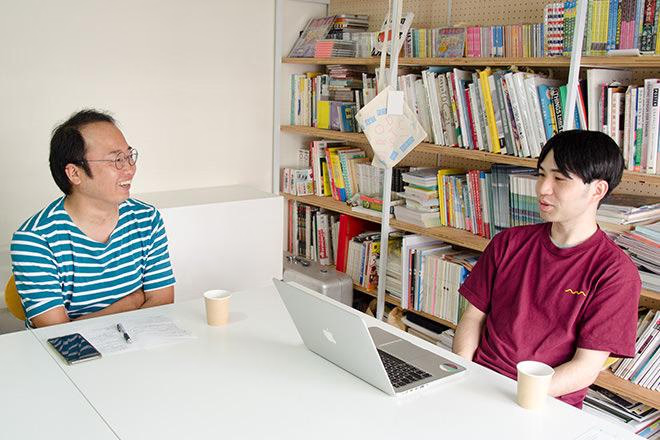
Hayashi
I really enjoyed having fun back then. I ended up going to a cram school for two years, and then a friend told me about the Institute of Advanced Media Arts and Sciences (commonly known as IAMAS) in Ogaki, Gifu Prefecture, so I took the entrance exam. I had never heard of IAMAS, even though it was in the prefecture next to my hometown. However, I enrolled in a music course because they had a professor who was a leading figure in Japan on the programming environment Max/MSP, which was popular in electronic music at the time, and they also had a studio.
Yamauchi
Once you enrolled, what was the atmosphere at IAMAS like?
Hayashi
IAMAS is now a graduate school, but at the time it had a strange structure with both a vocational school and a graduate school. I first enrolled in the vocational school. Then, there were high school graduates and people with work experience, people who could barely use computers, people who made sculptures, and people who just kept taking photos. Daido Manabe of Rhizomatiks was a year ahead of me in the same course, and it was interesting to see a group of people with quite crazy personalities (laughs).
Yamauchi
It had an atmosphere like the cutting edge of an art university.
*The Department of Inter-Media Art, Faculty of Fine Arts, Tokyo University of the Arts
Hayashi
That may be true. There weren't many classroom lectures, and seminars were the main focus. Teachers and students talked about what they were interested in, and consulted about any issues they were stuck on in their work. We all just had discussions. Also, the school building was open 24 hours a day, so we all hung out there playing and making things. It was a small community, so departments and ages didn't matter, so I was taught programming by people who had just graduated from high school, and how to submit work to someone who worked as a designer... I was in that kind of environment for a long time, and I was inspired by the way people behaved.

Hayashi's IAMAS graduation project. Music software that converts text into waveforms.
Yamauchi
Your experience at IAMAS must have had a significant impact on you, Yosuke. Did you ever think about what path you wanted to take in the future while you were there?
Hayashi
No, not at all (laughs). My British teacher at IAMAS owned a design company in Kyoto, and I had been helping out there since I was a student, so I vaguely thought I might just go there. Then, around that time, I had an unexpected encounter...
Yamauchi
I met some of the members of the advertising production company where I used to work through the internet.
Hayashi
That's right. It was Tsuyoshi Ishibashi . At the time, I often visited the personal website that he was running. The design of the website was simple but stylish, and it introduced music genres that I liked, so I used it as a reference.
After meeting someone on Twitter, he moved to Tokyo again.
Learn the importance of expanding your horizons.
Yamauchi
Were you online a lot at that time?
Hayashi
Yes, I was completely addicted to the internet (laughs). So when Twitter first started, I started posting on it too, and that's how I connected with Ishibashi. When I tweeted, "What should I do about finding a job?", Ishibashi, who was vaguely aware of my activities, replied, "Are you coming to Tokyo? I'll save you a spot."
After that, I had the opportunity to go to Tokyo for an exhibition at school, so I went to the company and was immediately given a task. The theme was "garbage."
Yamauchi
rubbish⁉
Hayashi
Yes. After explaining to me that indigenous people in various regions get information from garbage and use it to detect the location of prey, he asked me to "make a work using something like garbage on the Internet." So I made a work by extracting small images used on various websites and bouncing them like an animation on a web page. He didn't say anything about whether it was good or not, but just said, "That's interesting," and "So, do you want to come?" So I did as I was told and went to Tokyo (laughs).
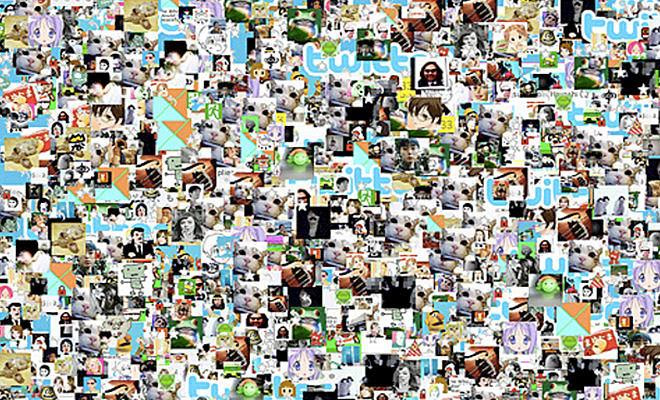
An experimental project to create works from "junk" on the web
Yamauchi
That's interesting! So, what was your first job?
Hayashi
I designed a variety of things, regardless of genre or field, such as an internal portal site for a company, posters for an idol group, and a promotional site for mobile phones. I did a lot of advertising work, which made me feel like I was in the industry, so I was happy (laughs). Before joining the company, I was creating websites by myself. I was self-taught, thinking about the structure, designing, and programming, so when I got involved in creating an advertising website for work, I was shocked to see how many people were involved!
Yamauchi
Although you joined the company in an unexpected way, it seems like you learned a lot.
Hayashi
There are many. Rather than expressing individuality, it's about expanding your own repertoire and increasing your versatility so that you can respond to whatever is asked of you. When I was a student, I thought that authorship was important, but I learned that there are other ways to be good at it.
Also, since there were many people who were knowledgeable about contemporary art and media art, we made websites and apps as independent projects. I once participated in an exhibition held in Croatia, and everyone contributed to my travel expenses. I also liked the atmosphere that was interesting for individual activities. I learned about the culture of enjoying work and private life at the same time.
One of the key members at that time was Manabe-san (current head of the production department). Thinking about it, even now when I work with Monosus, I work seriously on personal matters and events outside of work. This culture of "I don't really know what to do, but let's give it a try" hasn't changed since I first met Manabe-san, and I feel like I can still share it with Monosus.
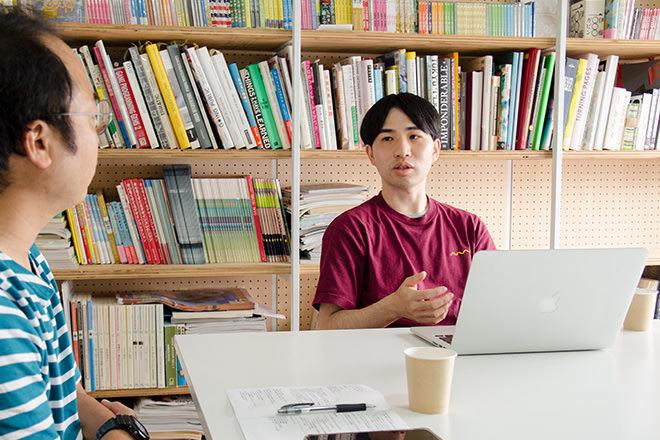
Yamauchi
How many years did you end up staying?
Hayashi
I ended up quitting the company in my third year. After gaining experience in a variety of design and advertising jobs, as well as website coding, I foolishly thought to myself, "Maybe I can make it on my own," and went freelance for a while.
The person who approached me at that time was Gavin Ito, an editor and game designer who was vaguely familiar with what I do. Gavin has created a company called Vostok, which brings together freelancers from a variety of professions, including graphic designers, filmmakers, manga artists, editors, and programmers.
While I was doing some work there, a friend I met at Dwango during my independent activities invited me to join the company as a Flash designer and programmer. It was a great experience for me to experience development methods for stably operating web services, such as test-driven development, Scrum, and retrospectives.
I encounter interesting things every time I work,
As we solve the mystery there, we arrive at the present day.
Yamauchi
About two years later, you'll be changing jobs to work in game development, right?
Hayashi
That's right. Up until then I'd always been working when other people invited me to, so I wanted to find a job on my own, and so I applied to Square Enix and became a contract employee. Game production involves a significant division of labor, and I was in charge of UI design for a certain famous RPG. First, the UI planner comes up with the general structure of the screen, and my job was to draw a picture of that, cut out the materials, and hand it over to the programmer. There was a huge amount of materials alone, so I wrote methods for managing them and scripts to automate the process.
Yamauchi
If we compare it to factory work, it was like building a line to make screws; it was a very specific task.
Hayashi
That's right. If a designer does each step by hand without a line, it will be a huge amount of work, so it is absolutely necessary to streamline it through programming. Through this work, I realized, "Maybe this is what I want to do." I want to use technology to solve the things that were previously too difficult to do and that require time and perseverance, and create a system that allows people to focus on more essential tasks.
After getting involved in game work at Square Enix, I went back to being a freelancer. The Google Innovation Tohoku project, which started around that time with Monosus, is very close to what I wanted to do. How to connect the issues of local people with technology. Engineers are struggling with problems that are surprisingly easy to solve, so if we can match them up, I think the world will get better and better.
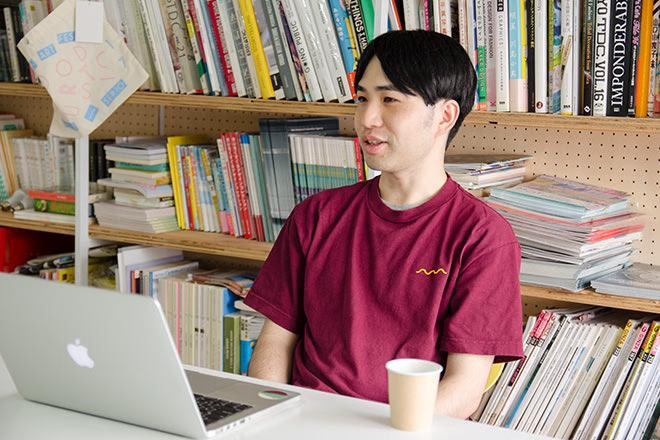
Yamauchi
Listening to Yosuke's career history, it's hard to believe he wasn't thinking about his future at all in high school (laughs). It's amazing how he has been able to tackle a variety of jobs so diligently and flexibly.
Hayashi
No, as always, I don't really think about it (laughs). I simply get jobs, and as I research I discover interesting things and worlds I didn't know about, and solving those mysteries has brought me to where I am today.
Yamauchi
Are you doing any work related to subculture and art, which you've always had a strong interest in?
Hayashi
I sometimes help out with projects for contemporary artist friends. For example, I was in charge of visual programming for Daisuke Yamashiro's work " TALKING LIGHTS, " which was exhibited at Roppongi Crossing 2016. Also part of Yamashiro's project, I created an art appreciation support tool called " folks" for use at the Arts Maebashi Art Museum in Gunma Prefecture. I worked with the people who participated in the workshop to come up with the content and exhibition method, and was in charge of implementation.
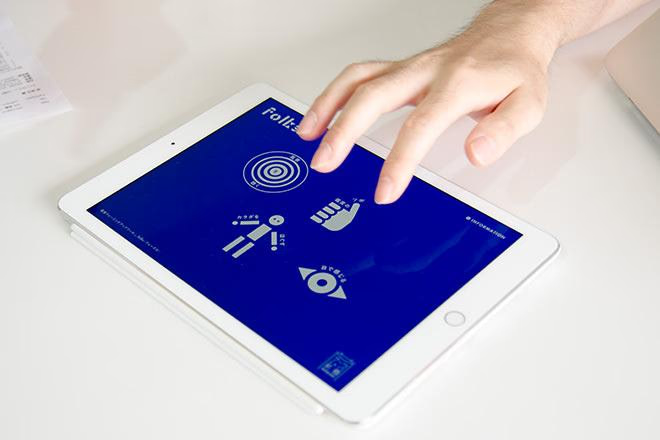
"Folks" is an art museum appreciation support tool for Arts Maebashi in Gunma Prefecture.
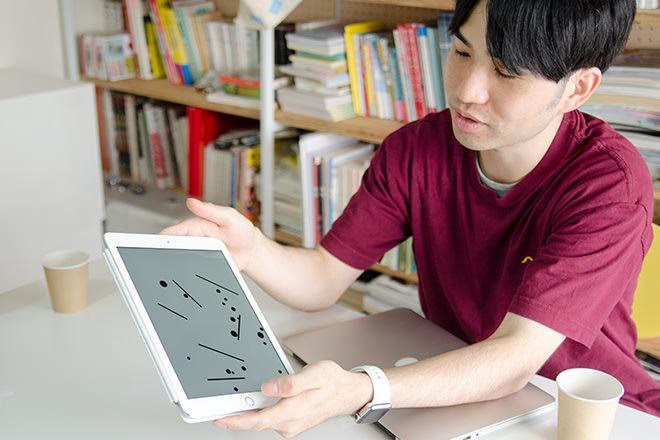
"Folks" not only supports appreciation, but also answers questions and allows you to use tools to warm up before enjoying art.
Yamauchi
If the request sounds interesting, what kind of work are you willing to take on?
Hayashi
That's right. However, I think it's more about the person than the content of the work. It's like, "It would be fun to be with this person." I don't have much of a creative side to me. Rather than applying what I want to say or the expressions I'm good at to my work, I have a strong desire to listen to the requests of the people who commission me and create something that fits those requests.
Yamauchi
Strangely, I never sense any sense of urgency from Yosuke. He always seems to be working calmly and with enjoyment.
Hayashi
I'm not in a hurry... Yes. I don't have any. As a designer or programmer, I have an ideal, and I really want to reach it. I want to become someone who can do more sophisticated design and programming. But I think the only way to get there is to work steadily. In terms of work in general, I'm blessed with a lot of work right now, and I think there are many cases that can't be done without me. I'm proud of that.
Yamauchi
What are you most passionate about right now?
Hayashi
This is the manga review site " Mamba ". I designed this site, and I proposed the name "Mamba" and the logo, so it's a job I'm very attached to. The engineer of this site is very knowledgeable about manga, and based on his way of searching and thinking, we are implementing a system that allows users to find manga that are interesting to them. Although it's not particularly new as a web service, there are many ideas behind it, and we've tried to make it easy to use without hesitation. In addition, there is a corner called " Mamba News " on the site, and we asked Gavin Ito to be the editor-in-chief. Many of the articles published are meaningful, and there are many interesting contents such as the serialization by Professor Hiromichi Hosomi, Faculty of Human Culture at the University of Shiga Prefecture, and the corner that seems to nitpick, " The winning rate if you put your plate out first in a cooking battle manga ". I hope many people will see "Mamba", which is clear, but academic and deep!
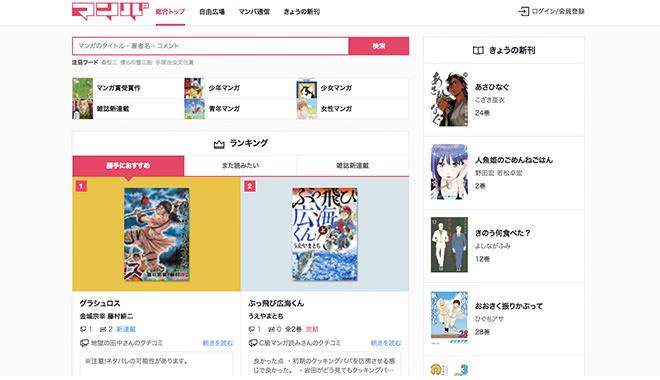
" Mamba " website (as of September 25, 2017)
Yamauchi
Then, Monosus will create a schedule, and we'll have a Mamba workshop with Yosuke as the instructor (laughs).
Hayashi
That sounds great! I'd love to continue working on a variety of projects, regardless of genre. I'd also like to work with a variety of people and grow by encountering new ways of thinking that I've never known before.
After the interview: A letter to Hayashi-san
I met Yosuke about 10 years ago when I was working at my previous job. As mentioned in the article, through an introduction from designer Ishibashi, he had graduated from a cutting-edge school called IAMAS, and was apparently a kid with good taste, who could design and program. I was wondering what kind of edgy guy he would be, but the person who showed up was an innocent young man with a shaved head and sparkling eyes. (I think he was 26 at the time.) But he did have good taste, and I remember that every time Yosuke put something out, we would all say things like "That's nice" or "That's cool" (laughs).
When I talk to Yosuke, we always get a lot of information that captures the "current atmosphere." ( The things he reblogged on Tumblr are always amazing. By the way, his Instagram is full of photos of soft serve ice cream.) He not only captures "current" things, but he also understands the good of the mainstream and the good of breaking away from the mainstream.
One of the things that attracts me about Yosuke is that he easily crosses genres such as art, design, technology, entertainment, and subculture. It's not that he crosses genres, but rather that traditional genres are irrelevant to him in the first place. (I think IAMAS is that kind of school.) That kind of stance is really inspiring. What I feel when I see Yosuke's activities and works as a creator and work with him is that he is not the "me, me" type, but rather sees himself as a "container" that inputs and outputs, and has a sense of embodying what needs to be communicated from outside himself, rather than expressing what is inside him. I think that's what a great creator is like.
It's been about two years since we started working on a project together in earnest, but I'd like to continue working together for a long time to come, and I'd like to (privately) keep an eye on what kind of work Yosuke is up to next.
The memorable wedding of Yosuke-kun and Isu-san (Ishibashi-san is on the top right)
The other day, we went to the Reborn Art Festival in Ishinomaki together, with Barry McGee 's work in the background.Makoto Yamauchi
